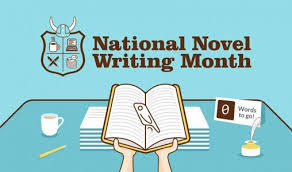How to Choose a Title for Your Story, Book, or Article
a guest post from children’s author Melissa Abramovitz
What’s the best way to spark readers’ interest in your book (or short story or nonfiction article)? Give it a good title. How to choose a title?
The title is like the book’s calling card—the all-important first impression that can convince a potential reader to start reading or to look for a more appealing book.
An effective book title can not only inform others what your book is about; it can also promise them adventure or fun or a better life—which are all good reasons to buy and start reading.
So it’s important to spend time developing a good title that grabs peoples’ attention and gives them a good reason to choose to read your book.
When writing for children, the title should not only appeal to the child for whom the book is intended, but must also appeal to the parent, grandparent, or other adult who makes book-buying decisions.
The title should therefore reveal enough to tell these decision-makers that the book is interesting and age-appropriate for children in a particular age group.
There are many ways of coming up with intriguing titles for childrens’ books.
Here are five tried-and-true methods:
1. Sometimes, the theme of a story or an interesting fact related to a nonfiction book “demand” inclusion in the title.
For example, an intriguing title for an article about sleep-wake cycles might be “There’s A Clock Inside Your Brain.”
And Maurice Sendak’s uber-famous book, “Where the Wild Things Are” promises readers adventure as they hop on board the storyline—so they keep hopping aboard.
2. Titles that use word-play are fun for kids (and adults).
In fact, very young children may not immediately grasp the humor in a title that uses word-play, but will “get it” later on.
This can lead to an “ah ha” moment when the child says, “Now I understand why Mom always laughs at that title!”
Examples of titles that use word-play are “Watch Out! Your Computer Can Byte!” and “Stay Tuned for the Mane Event.”
3. Titles that use alliteration (repetition of sounds in the first letter of each word or within words) abound in childrens’ books because they’re fun, catchy, and memorable.
An alliterative title I used in a story about pets was “Feathered, Furry, and Finny.”
And the title of a piece about how animals use their tails used both alliteration and word-play: “Telltale Tails.”
4. Kids enjoy titles that rhyme because they are memorable and fun, as in “Time for Snow and Cookie Dough” and “The Llama Mama’s New Pajamas.”
5. Titles that ask an intriguing question can be irresistible to a child (or parent).
The titles “Would You Swallow A Computer Chip?” and “What Happens 35 Million Times Per Year?” make me want to find out what’s inside the book!
Click here for more about titles
About Melissa Abramovitz
 Melissa graduated summa cum laude from the University of California, San Diego with a degree in psychology and is also a graduate of The Institute of Children’s Literature.
Melissa graduated summa cum laude from the University of California, San Diego with a degree in psychology and is also a graduate of The Institute of Children’s Literature.





